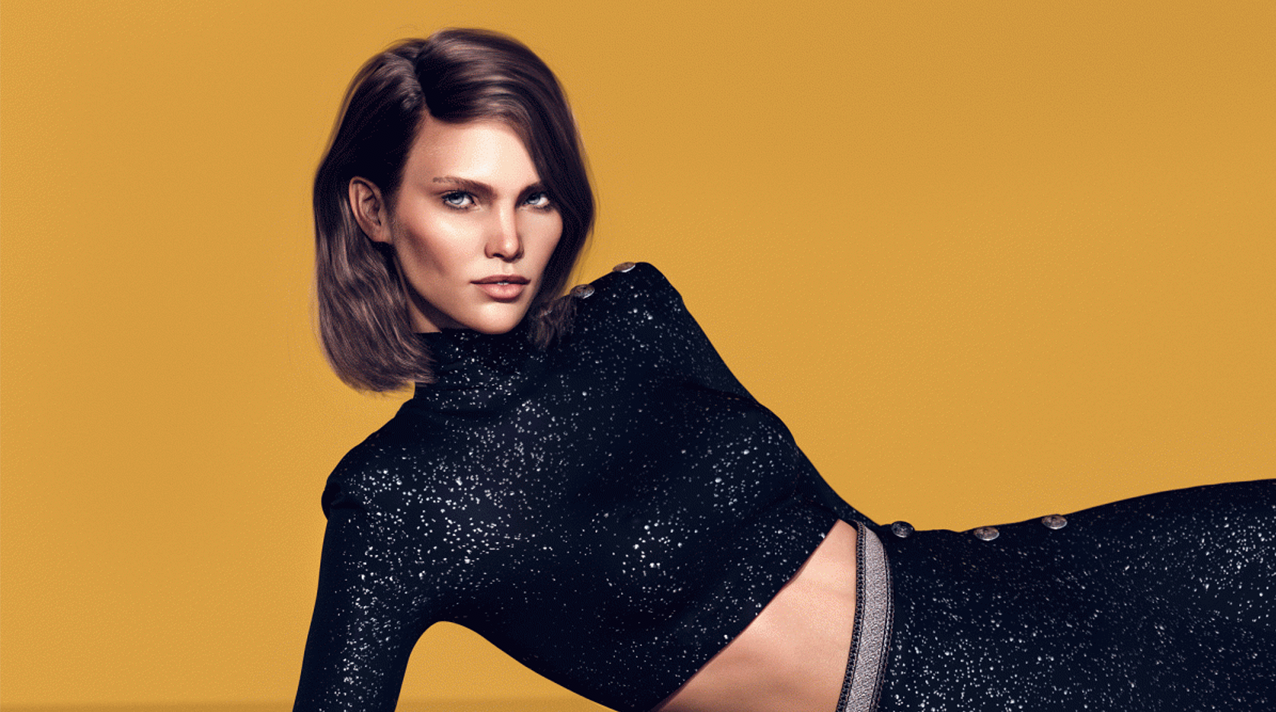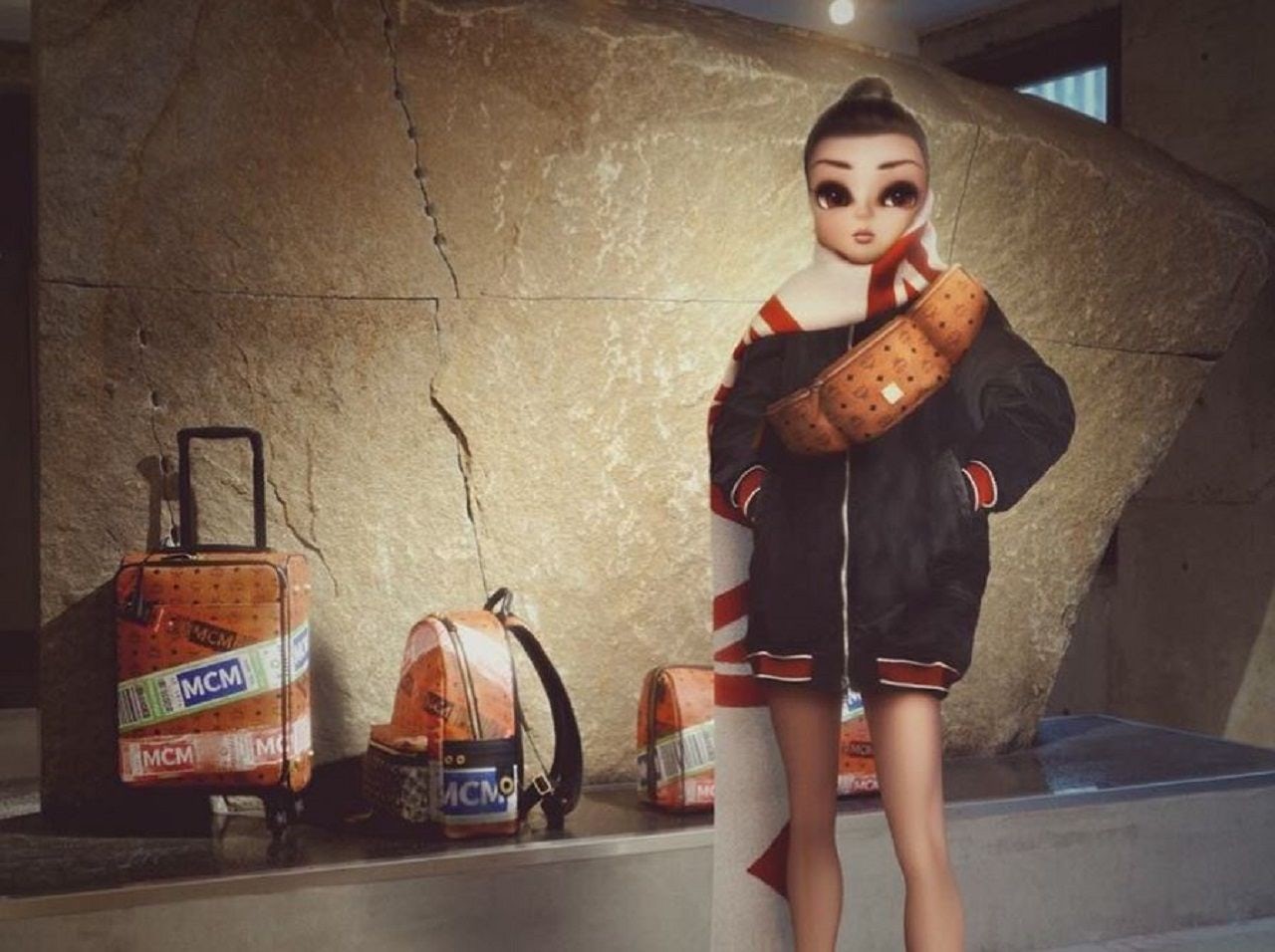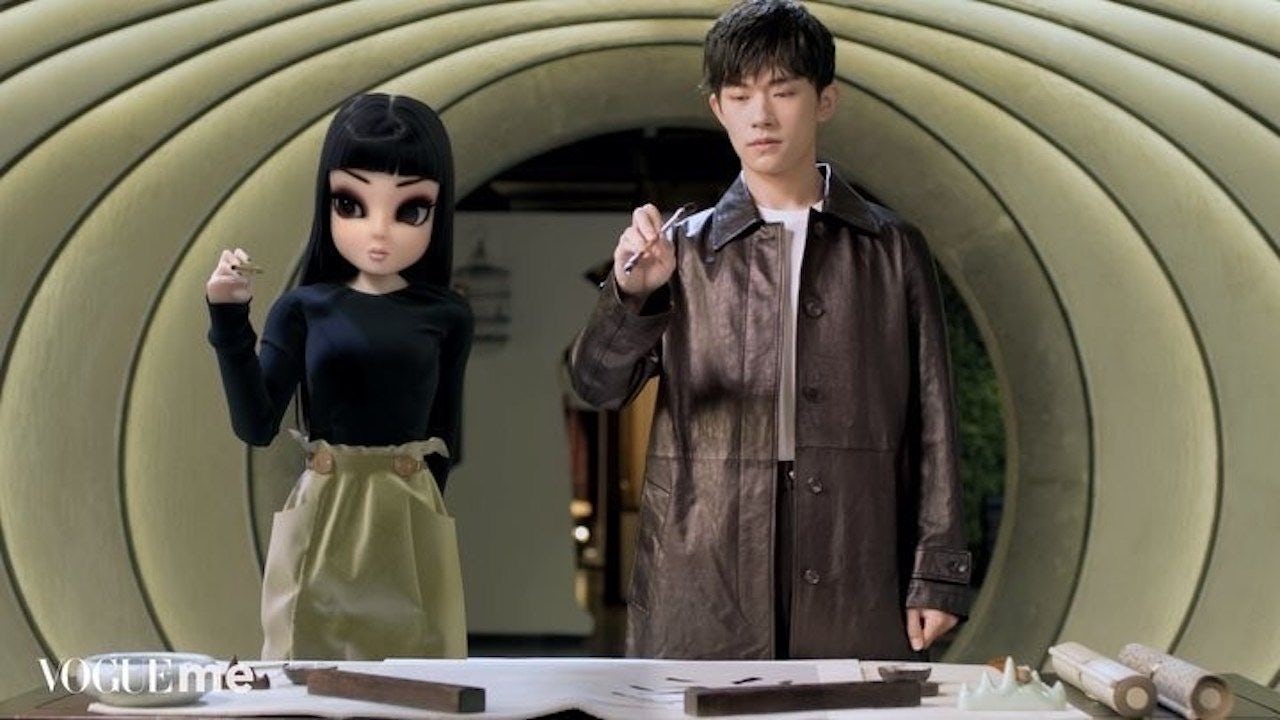Oscar Wilde famously said, “One should either be a work of art or wear a work of art.” According to Fashion and Imagination: About Clothes and Art, since the 1960s, we have obscured the boundaries between the two. Imagination and fantasy are components of any art form, so it shouldn’t come as a surprise that the retail world is moving further away from realism, while it embraces the realm of imagination. And today, modern technology is transforming the luxury world as we know it, bringing consumers closer to brands through the use of retail intelligence and analytics, Artificial Intelligence-powered software, gamification reality, augmented reality, and even virtual influencers (VI).
Some fashion aficionados will argue that VI sounds like an unreal and implausible reality. Interestingly enough, viewers offered the same critic in 2002 for Simone. In the movie, Al Pacino plays a disenchanted producer who creates “the first totally believable synthetic actress.” Back in 2002, the movie didn’t impress critics and movie goers branded it a flop, arguing that the “plot isn't believable enough to feel relevant.” Fast forward 17 years and today we live in a world where digital creations are proposed by social media and luxury brands as personalized testimonials. Evidently, artificial intelligence and digital talents have come a long way from Max Headroom and other cartoonish characters. In fact, today’s virtual characters look and act like real humans. Furthermore, the content creation behind them is equally impressive.
These virtual influencers act like cool Gen Zers, have captivating, aspirational life stories, take part in the right events, hang out with the right celebrities, and they even engage with the In-crowd on social media. Basically, they are a flawless response to society’s need of an Insta-perfect lifestyle. Plus, they work 24/7 and are easily controlled. Thus, luxury retailers won’t have to overcome PR disasters and abnormal communication strategies that could tarnish the carefully curated brand image. Moreover, VI don’t age, have radical look changes, or get sick.
Additionally, there are also financial considerations. According to estimates by WalktheChat and Jing Daily, “WeChat influencer After Party, with 550,000 followers and about 32,000 average views charges RMB 40,000 (roughly 5,500) for one post. WeChat KOL blogger手账 with 70,000 average views charges RMB 33,000 (roughly 4,600) for one post.” And in the West, top influencers and celebrities like Selena Gomez and Kylie Jenner can make up to 1 million per Instagram post. By contrast, creating a virtual influencer from scratch and using him as a brand ambassador would come cheaper.
There’s also a level of authority that we associate with VI. As end-consumers we are merely followers of trends and fashions, tracking every move of celebrities and KOLs. But virtual influencers transform us from spectators into creators. It’s us and our feedback that dictates what outfit the VI should wear, where they’ll go, what social causes they’ll follow or with whom to engage. This character manipulation is empowering and responds to current trends that see a shift from KOLs (key opinion leaders) to KOCs (key opinion consumers).
Given the ongoing benefits of partnering with VI, it shouldn’t come as a surprise that luxury brands like Prada, Dior, and Balmain used them in their marketing campaigns. Olivier Rousteing, Balmain’s Creative Director, intergrated Margot, Shudu and Zhi, three computer-generated models, in the Balmain virtual army, showing that the ranks are open to everyone who has status, looks and a strong social media presence. But despite clear advantages for using computer-generated personas, there are even some challenges.
Identity problems#
According to Incitrio, Vanitha Swaminathan, a marketing professor at the University of Pittsburgh believes “these virtual influencers might just be so real that consumers might not even realize the difference, which can potentially harm consumer-brand relationships over time.” This could raise not only serious ethical issues but also legal challenges.
Legal challenges#
According to Heather Nolan from the Adweek, “Shudu’s creator is a white male whose digital creation was inspired by real-life African American models.” Nolan points out that the brand is already “facing cries of cultural appropriation” because a white male gains serious financial benefits by exploiting the image of a black woman. Obviously, a communication crisis might imply hundreds of thousands of dollars in legal fees.
Controversies#
Calvin Klein came under fire after promoting their “Get Surreal” ad featuring Bella Hadid and Lil Miquela. Fans were outraged seeing the passionate kiss between the virtual model and Hadid because they felt that Calvin Klein is “queerbaiting.” Shortly after the event came the brand’s apology saying that “the specific campaign was created to challenge conventional norms and stereotypes in advertising.” The uproar calmed down, but the misstep shows that luxury brands can have serious PR disasters even while using virtual models.
Moral Issues#
In an interview with Yahoo Finance, Bryan Gold, CEO of creator media platform #Paid, said that the situation is “getting kind of scary.” Since “brands are partnering with virtual influencers who don’t have any defined values or belief systems,” Gold believes authenticity is stolen from the process. He raises a valid argument by mentioning that the end consumer doesn’t even know if the computer-generated persona enjoys the product because he cannot test it. And what if the advertised product is flawed? As a consumer, you can’t rely on a virtual model to tell you how a moisturizer or a cream feels on your skin. This could raise serious moral issues.
Luxury retailers are becoming increasingly desperate to connect with a generation of digital savvy buyers, we (the consumers) force them to turn to personalized solutions that prove that their brands can remain relevant even in a high-tech world. Moreover, the market seems saturated with KOLs and v-loggers, so luxury brands turn to media targeting by using avant-garde solutions that secure them great media coverage and good PR.
It’s too early to acknowledge the success of virtual influencers but according to Kolsquare, at the very least they will pressure real influencers “to offer better quality content and to build loyalty among their subscribers.”


